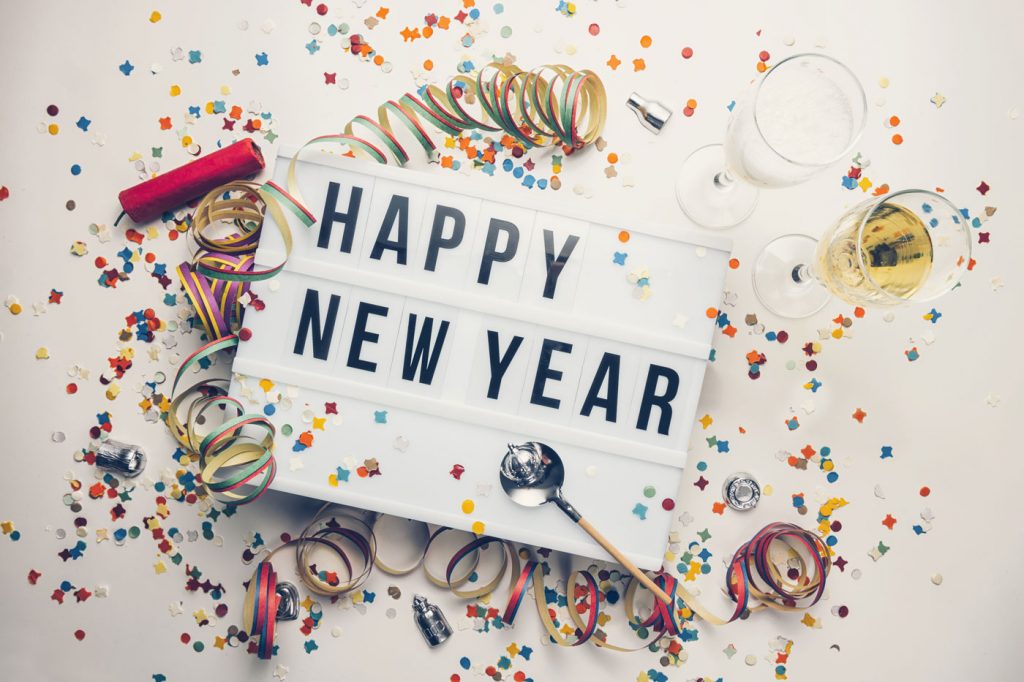This is how New Year’s Eve is celebrated around the world
New Year’s Eve is a time of celebrating a bygone 365 days and welcoming what lies ahead.

New Year’s Eve is a time of celebrating a bygone 365 days and welcoming what lies ahead.

Whether you’re ringing in New Year’s Eve from some exciting foreign country or at home with family and friends, you probably have a New Year’s tradition or two. Around the world, cultures welcome the change of the calendar with unique New Year’s Eve traditions of their own. Here are some of our favorite New Year’s Eve traditions around the world.

In Spain, it is customary to eat 12 grapes – one at each stroke of the clock at midnight on New Year’s Eve. Each grape represents good luck for one month of the coming year. In bigger cities like Madrid and Barcelona, people gather in main squares to eat their grapes together and pass around bottles of cava.
If you came out of your front door to find a load of smashed plates, you might be a bit confused. If you were celebrating New Year in Denmark, it would be a good thing if you found this on your doorstep, because that’s exactly what people in Denmark hope to find after midnight, as it means good luck. So, if you were Danish, you might go and smash a plate on a friend’s doorstep to bring good luck over the next 12 months.
For good fortune in the newly arrived year, Brits believe the first guest to enter through the front door should be a young, dark-headed male bearing gifts such as bread (to be full), salt (to be wealthy) and coal (to stay warm).
Some South Africans—particularly those in the neighborhood of Hillbrow in Johannesburg— take cleaning house for the new year to an entirely new level. Throwing old furniture and appliances (think fridges!) from the windows of tall buildings on New Year’s Eve somehow helps to make the new year bright. It’s actually a very serious health hazard there!
In Romania, there’s a tradition for people to dress up as dancing bears to chase away any evil spirits. Romanian children can be seen dressing up as bears to celebrate New Year. This is because bears are special according to old Romanian stories and are able to protect and heal people.
You’ll find round shapes all over the Philippines on New Year’s Eve as representatives of coins to symbolize prosperity in the coming year. Many families display piles of fruit on their dining tables and some eat exactly 12 round fruits (grapes being the most common) at midnight. Many also wear polka dots for luck.
An onion is traditionally hung on the front door of homes on New Year’s Even in Greece as a symbol of rebirth in the New Year. On New Year’s Day, parents wake their children by tapping them on the head with the onion.
Before getting excited about the new year, people in Ireland make sure to spot clean their entire house. They even go outside and give the same TLC to their garden and cars. When it gets closer to midnight, it’s tradition to throw bread at the walls to chase away evil spirits. This is followed by a special dinner where they reminisce about family and close friends who passed away. To honor their loved ones, they leave the door unlatched and set a place at the table.
The Año Neuvo is a time of embracing renewal. This is marked by throwing buckets of water out the window and opening the front door to symbolically sweep out the old year. Families toss coins onto the ground and sweep them back into the house to encourage a prosperous future. Meanwhile, they attend decorative parties, parades, and festivals, complete with eye-catching fireworks and the traditional Latin American custom of burning scarecrows.
As is the case in most South American countries, the Peruvians celebrate the new year with grapes, fireworks, and traditional food. However, they also have their own custom that involves putting three potatoes under a chair. One is peeled, one is partially peeled, and the other has all its skin. At midnight, a person chooses a potato with their eyes closed and each yields a prediction for the future. If you get the one with skin, you’ll be prosperous, the one that’s partially peeled means you’ll have a normal year, and the one with no skin means you’re destined to have no money.
New Year’s Eve is a special occasion in South Korea. Many of their seaside towns hold “sunrise festivals” where people watch the first sunrise of the New Year. If you make a wish as the sun rises, it will come true for the new year. Some people also write down their hopes and dreams and put them in balloons or lanterns that are released into the sky. Koreans wear traditional hanboks and focus on reconnecting with family. They also make duk gook rice cakes or dumplings to offer to their ancestors.
